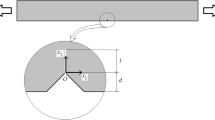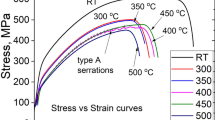Abstract
The evaluation of strength of ceramics is an important problem in their application to engineering components. Although fracture initiating from inherent flaws in ceramics is supposed to be analyzed through linear elastic fracture mechanics, the applicability of a plane-strain fracture toughness criterion is in dispute.
In this investigation, fracture tests for two grades of sintered silicon nitride were conducted under plane-bending and ring-compression. As the size of inherent flaw observed at the fracture origin was larger, the critical stress intensity factor for the flaw increased and then almost coincided with the fracture toughness. This suggests that ordinary fracture mechanics data should not always be applied directly for predicting the strength of engineering ceramic components. The flaw-size effect was discussed from the point of the applicability of fracture mechanics and the relation with material microstructure.
Résumé
L'évaluation de la résistance des céramiques est un problème important pour leur application à des composants mécaniques. Bien que l'amorçage d'une fissure dans une céramique au départ de défauts inhérents soit normalement analysable par la mécanique de rupture linéaire et élastique, on n'est pas d'accord sur la pertinence d'un critère de ténacité à la rupture en état plan de déformation.
Dans cette recherche, des essais de rupture de deux nuances de nitrure de silicium frittées ont été exécutés en flexion plane et en compression d'anneaux. On a observé que lorsque augmente la taille d'un défaut initial repérable comme origine de la rupture, le facteur critique d'intensité de contrainte pour le défaut considéré augmente et coïncide presque avec la ténacité à la rupture. Ceci suggère que les données habituelles de la mécanique de la rupture ne peuvent pas être toujours appliquées directement pour prédire la résistance de composants mécaniques en céramique.
L'effet de la taille du défaut est discuté des points de vue de l'application possible de la mécanique de rupture et de la relation avec la microstructure du matériau.
Similar content being viewed by others
References
T.T. Shih and J. Opoku,Engineering Fracture Mechanics 12 (1979) 479–498.
A.G. Evans and R.W. Davidge,Journal of Materials Science 5 (1970) 314–325.
J.L. Henshall, D.J. Rowcliffe and J.W. Edington,Journal of Materials Science 9 (1974) 1559–1561.
G.K. Bansal,Philosophical Magazine 35 (1977) 935–944.
J.J. Mecholsky, Jr., S.W. Freiman and R.W. Rice,Journal of the American Ceramic Society 60 (1977) 114–117.
G.K. Bansal and W.H. Duckworth,Fracture Mechanics of Ceramics 3 (1978) 189–204.
M. Kawai and H. Abe,Reports of Research Laboratory of Asahi Glass Co. Ltd. 32 (1982) 25–36.
T. Yamada, T. Hoshide and H. Furuya,Journal of the Society of Materials Science, Japan 33 (1984) 28–33.
E.A. Ripperger and N. Davids,Transactions of American Society of Civil Engineers 112 (1947) 619–635.
R.K. Govila, K.R. Kinsman and P. Beardmore,Journal of Material Science 13 (1978) 2081–2091; 14 (1979) 1095–1102.
I. Takahashi, K. Nakakado and H. Miyata,Preprint of Japan Society of Mechanical Engineers, October Meeting, No. 830-10 (1983) 31–33.
R.R. Wills and J.M. Wimmer,Journal of the American Ceramic Society 59 (1976) 437–440.
J.J. Petrovic and L.A. Jacobson,Journal of the American Ceramic Society 59 (1976) 34–37.
P.N. Randall,ASTM STP 410 (1966) 88–126.
J.P. Singh, Anil V. Virkar, D.K. Shetty and R.S. Gordon,Journal of the American Ceramic Society 62 (1979) 179–183.
R.W. Rice, S.W. Freiman and J.J. Mecholsky, Jr.,Journal of the American Ceramic Society 63 (1980) 129–136.
R.W. Rice, S.W. Freiman and P.F. Becher,Journal of the American Ceramic Society 64 (1981) 345–350.
D. Broek, inElementary Engineering Fracture Mechanics, Noordhoff International Publishing, Leyden (1974) 166–169.
R.C. Shah and A.S. Kobayashi,ASTM STP 513 (1972) 3–21.
K. Tanaka, T. Hoshide and O. Maekawa,Engineering Fracture Mechanics 16 (1982) 207–220.
Author information
Authors and Affiliations
Rights and permissions
About this article
Cite this article
Hoshide, T., Furuya, H., Nagase, Y. et al. Fracture mechanics approach to evaluation of strength in sintered silicon nitride. Int J Fract 26, 229–239 (1984). https://doi.org/10.1007/BF01140630
Received:
Revised:
Issue Date:
DOI: https://doi.org/10.1007/BF01140630




